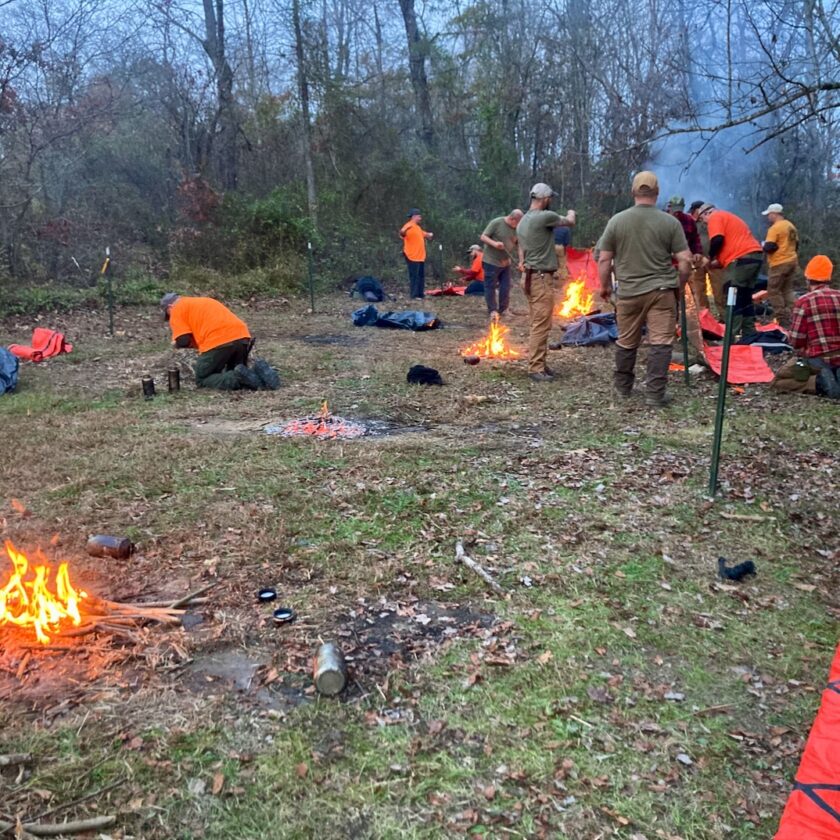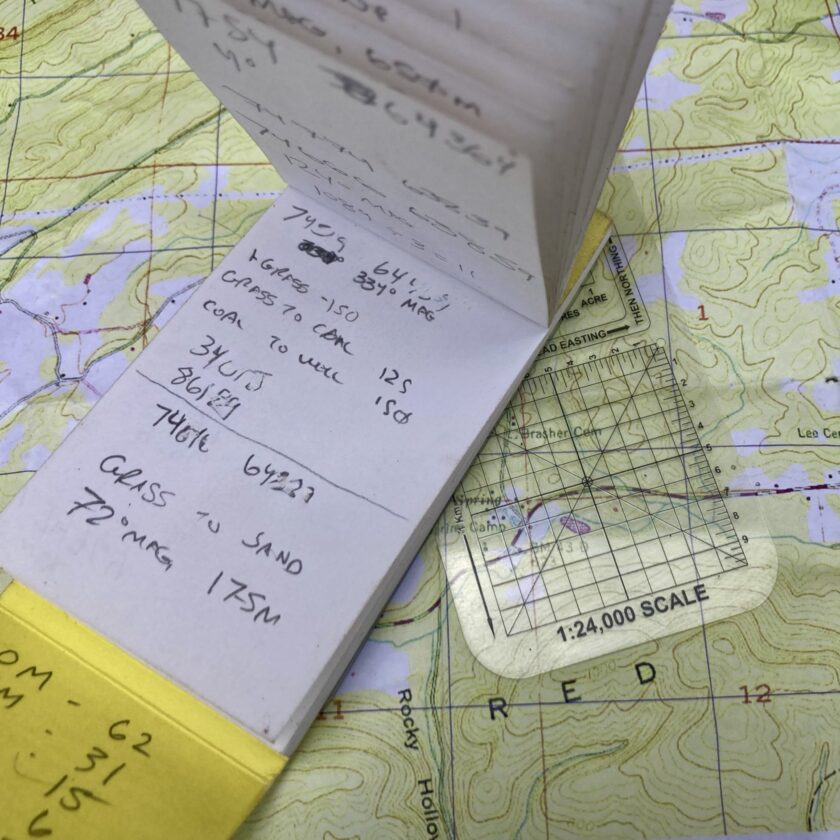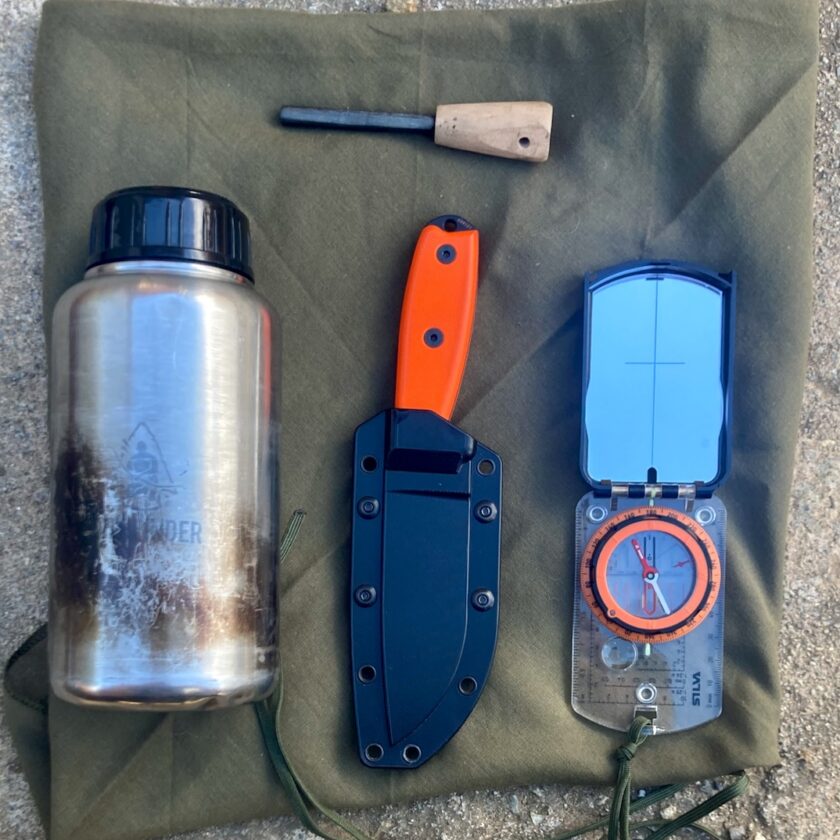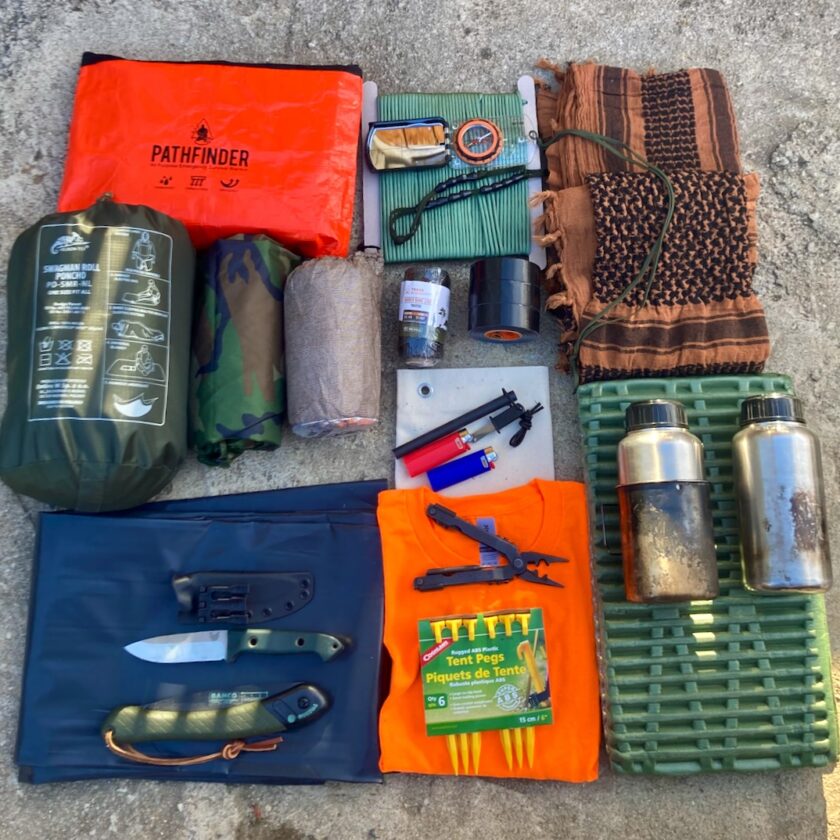Having attended both courses this year, I am sometimes asked to compare Randall’s Field Survival vs Basic Survival at Pathfinder School. If a handful of people that I regularly interact with are asking this, a few of you must be wondering it, too, so I thought I’d share my thoughts. Both were GREAT courses and this isn’t to find a “better” one, just to compare and contrast the differences for anyone deciding between the two.
Full Disclosure: I paid full price for The Pathfinder School’s Basic Survival Class. I was given free attendance at Randall’s Adventure Training’s Field Survival due to my SAR affiliation. However, this review was coordinated with neither party prior to publication, and the thoughts here are mine and mine alone.
Field Survival vs Basic Survival
I think you should attend some wilderness survival training. If it’s a tossup between your eighteenth pistol class and a survival class, TAKE THE SURVIVAL CLASS! Beyond a certain point you aren’t going to make leaps-and-bounds improvements with your pistol skills. You do stand to make huge gains in other domains, however. You don’t have to be an outdoorsman to find yourself in a survival situation, but if you find yourself in one, you’d better be prepared to deal with it.
This article compares the two survival classes I attended this year. Again, this isn’t a “which is better” article. It’s more of a “which is better for you?” I aim to to provide the information to allow you to decide which of these courses best meets your training needs. Both Field Survival and Basic Survival are outstanding courses. Both will prepare you for an emergency situation and help make your harder to kill. There are some significant differences, however
Field Survival vs Basic Survival: Similarities
First, we’ll look at the things these courses have in common. Both are survival courses, but there are some bigger similarities than that. Lets get into them.
Similarity: Course Length
Both of these classes are three days in length. Both start on Friday morning, Field Survival starting at 05:30 and Basic Survival beginning at a slightly more reasonable hour. They run all day Friday, all day Saturday, and conclude midday Sunday. There is some variation in classes here, but this is the general timeline. Basic Survival, for instance, has longer days in the summertime when there is more light.
Important Note: in Field Survival there is no “time off” once the class starts. Class is not over until it’s completely over on Sunday afternoon. In Basic Survival we got nights off to cook meals, camp, and catch up on sleep. This is a big difference, but the overall course length is similar and requires a similar time commitment if you’re planning to attend.
Similarities: Survival Basics
Both classes teach the basics: Fire, Shelter, Knife Skills, Water Procurement, Land Navigation, and Signaling. If you found yourself in a survival situation after having attended either of these courses, you’d have the same basic set of knowledge.
Field Survival teaches all of the basics. We spent the majority of Day One in the classroom and in a controlled environment learning essential survival skills. Then that night (after a lengthy PT session) we began to put land navigation into heavy, heavy practice. There were also skill stations where other tasks – building a fire or a shelter, for instance.

The Pathfinder school also taught all the basics. This included the 10 Cs, First Aid, Knife Skills, Fire, Shelter, Knots, Water Collection, and Signalling. Events at the Pathfinder School were structured similarly. We would do a land navigation course, come back, and have to execute timed, graded deliverables such as building fire, constructing a shelter, or boiling water.
Field Survival vs Basic Survival: Differences
With that out of the way, let’s get into what you want to know about: the differences that separate these two courses. The differences between Field Survival vs. Basic Survival are pretty profound, and more numerous than the similarities. The main differences, as I see them, are land navigation, the gear lists for the two courses, and the focus/intensity. Let’s take a closer look!
Differences: Land Navigation
Land navigation is taught at both schools. But it is a much, much bigger priority and taught to much greater depth at one than the other.
Field Survival: This is a heavy-duty land navigation course. Land nav consists of map reading, plotting points, doing long movements, over rough terrain, both night and day. It’s also worth noting that Patrick Rollins’ land navigation class is easily the best one I’ve ever attended…and I’ve been to a LOT of land navigation classes. I’ve even taught some for my local SAR team. And Randall’s even makes their land navigation Powerpoint publicly available, should you want to self-teach yourself land nav.

Basic Survival: Basic Survival does require completing several land navigation exercises. Land navigation is a little bit different in Basic Survival, however. Land navigation was grossly simplified to simply walking from point-to-point, whereupon you’d be given another azimuth. This didn’t teach map reading, determining an azimuth from a grid, terrain association, or converting a grid azimuth to a magnetic azimuth. Other classes doubtlessly offer more in-depth land navigation, but speaking honestly, Basic Survival’s version was a little too simplified for my liking.
Difference: Equipment
Equipment is a HUGE difference in these two survival courses. One has an incredibly minimalist packing list; the other has a full backpack’s worth of stuff. Neither is better or worse, but both impact the experience heavily.
Field Survival: The gear list, copied directly from Randall’s website reads, “Fixed blade knife with sheath, Ferrocerium rod, clothing appropriate for the season, hiking boots (broken in), water container (hydration packs are acceptable), cap or bandana, mirrored baseplate compass, pace count beads (optional). No other personal gear (including watches, cameras and phones) are allowed during the course.” The website further states, “Food and equipment are provided. Please note that no cell phones, watches or electronic devices will be allowed during this class.” Seriously, it’s a knife, water bottle, compass, ferro rod, and bandana. And food “provided.” Right.

Basic Survival: This list is much longer. I’ll just paste the gear list from my Basic Survival AAR below:
- Cutting: Knife, folding saw, Swiss Army Knife or multi-tool. I brought a Benchmade Bushcrafter, Bahco Laplander, and Gerber MP600 Multiplier.
- Combustion: 2x Bic lighters, 1/2″ x 6″ ferro rod, and a Fresnel lens
- Cover: 5′ x 7′ space blanket, 2x 6-mil, 55-gal drum liners, poncho liner or Swagman Roll, mil-spec poncho, survival bivvy, 6 ABS plastic tent stakes, and a folding sleeping mat
- Cordage: 100′ paracord, 100′ #36 tarred bank line
- Container: 2 single-walled, stainless-steel water bottles and 1 nesting cup, Milbank Bag
- Compass/Nav: mirrored compass (they recommend Suunto MC-2), pace beads
- Cloth/Repair: 2XL orange 100% cotton t-shirt, 2 cotton shemaghs
- Candling: headlamp with red-light capability, extra batteries
- Cargo Tape: 1″ x 10′ roll of Gorilla Tape
That’s a pretty big difference, huh? Plus you can bring your phone, wear a watch, have food, and tent-camp onsite.

Difference: Focus & Intensity
Of course the amount of gear you have, as well as the ability to check the time and text your girl, really influences your experience at the course. And this is where the rubber really meets the road. There is a vast chasm of difference in intensity between these two classes.
Field Survival: This is, without a doubt, the most intense, non-military course I have ever attended. The stated focus of the class is to put you under extreme stress. Since “we can’t put you in a plane crash before the course begins,” they wear you out, physically and mentally, and still expect you to perform. You are hungry, sleep deprived, physically exhausted, and still have to maintain the mental acuity to do complex tasks like land navigation. There is no downtime during the class, you shouldn’t expect to eat anything at all, and you should plan on doing a lot of PT and getting yelled at. If you pass (many don’t – my class started with 13 and graduated 9) you will have absolute confidence that you can survival the mental aspects of a survival situation.
Basic Survival: Much more relaxed, Basic Survival focuses more on the skills of survival. There is time to eat (indeed, you are allowed to bring as much food as you want!), time to sleep (almost too much time in winter!), and the no grueling PT sessions. Well-rested, well-fed, non-stressed students are better able to learn new, complex information, and this class does a fantastic job of that. In my estimation, more knowledge was transmitted and retained during this class than Field Survival. On the other hand, there wasn’t quite the pride of accomplishment at completing Basic Survival as there was with Field Survival.
Which One is Right for You?
The burning question in Randall’s Field Survival vs Basic Survival at Pathfinder School: which one is better? The answer: neither! Both of these classes were outstanding and I”m so thankful that I attended both. Basic Survival taught a lot more skills, while Field Survival left me with an immense pride in being on of the nine in my class to finish. Going into a real-life survival situation in the future, I would not want to be without either of these valuable experiences!
Frankly, I would recommend the Pathfinder School Basic Survival for most people. As Pathfinder’s website says, “basic does not mean easy,” and this is accurate, but it isn’t nearly as hard as Field Survival. This is especially true if you have no prior knowledge of survival techniques; the environment at Basic Survival is more conducive to learning for the first time. If, however, you already have a strong foundation in survival skills and want an all-out, gut-check challenge, check out Field Survival. You will learn mental and emotional fortitude, and find the reserves you’ll need in a survival situation…if you don’t quit.
Again, both of these courses provide tremendous value! Which one is right for you depends on your current skill level and what you hope to get out the class(es). And it doesn’t have to be either/or…you can always do both, like I did!





